Wall to Wall : The Man Who Bought Silence and Found Noise Behind Every Wall
Spoiler alert: Screen Saga provides you with a detailed review. So you will get to know the entire storyline from this digital piece and other noteworthy scenes that deserve your attention.
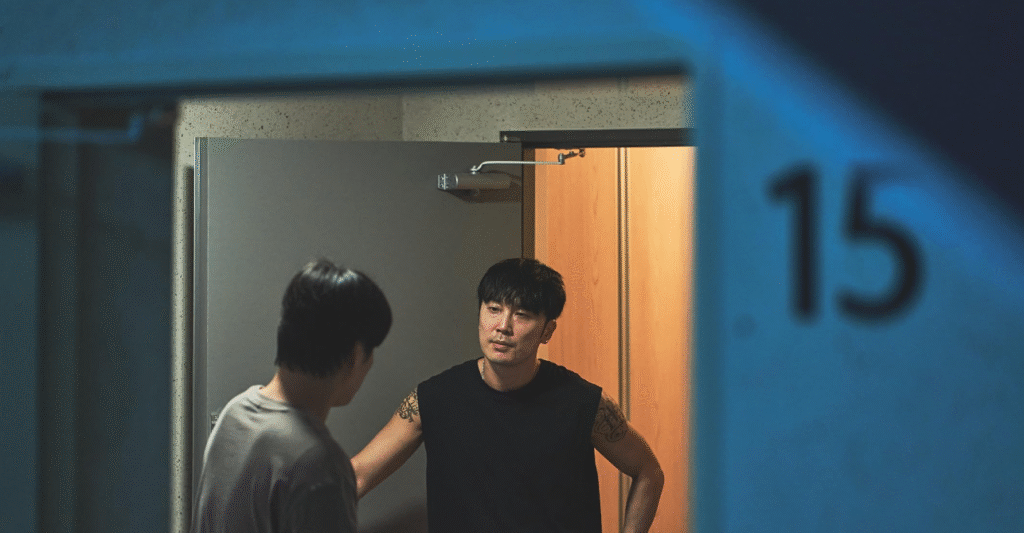
Part 1: The Dream Apartment Turns Into a Nightmare
The film begins with a Korean man working a typical 9-to-5 job, whose ultimate dream is to own an apartment in Seoul. He sacrifices everything to make this dream come true. After years of saving and struggle, he finally purchases a unit and moves in, hoping to start a new chapter in life.
However, things take a strange turn.
Soon after moving in, he begins to hear strange, constant noises coming from other apartments—banging, footsteps, yelling, unexplained disturbances. It’s relentless. Each night, after a long day at work, he comes home not to peace, but to a barrage of sound that wears him down mentally and emotionally.
He complains to the landlord, only to be told it’s a common issue in high-rise buildings and nothing serious. The landlord even offers him some money as a gesture to calm him down. But the noises don’t stop. They grow louder, more chaotic, and more frequent.
Part 2: The Breakdown Begins
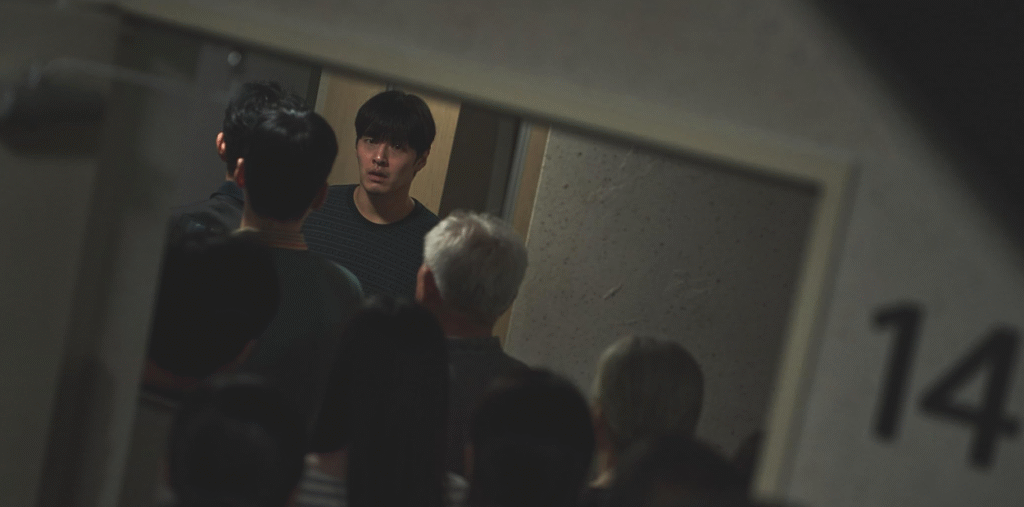
Now overworked and under constant stress, the man takes up an additional job as a delivery agent just to manage the apartment loan. Then one of his work buddies—a loud and shady crypto enthusiast—encourages him to invest in cryptocurrency, promising huge returns.
Desperate for relief and a way out, he mortgages his apartment and dumps everything into crypto, hoping to turn things around quickly. But the real twist comes when the neighbors themselves begin knocking on his door—Unit 1401. Each one complains he is the source of all the noise. According to them, all the disturbance, banging, and chaos are coming from his apartment.
So while he believes the building is tormenting him, the rest of the tenants think he is tormenting them.
This duality, where the victim might actually be the cause, makes Wall-to-Wall deeply unsettling. The movie is grotesque, hypnotic, and disturbing, yet at times strangely slow. But despite the pacing, it holds your attention until the very last frame. It’s not an easy film to review because it’s layered, confusing, and emotionally jarring. But it’s absolutely worth watching if you’re into psychological thrillers that mess with your sense of reality.
Part 3: The Fall – Truth, Blame, and Total Collapse
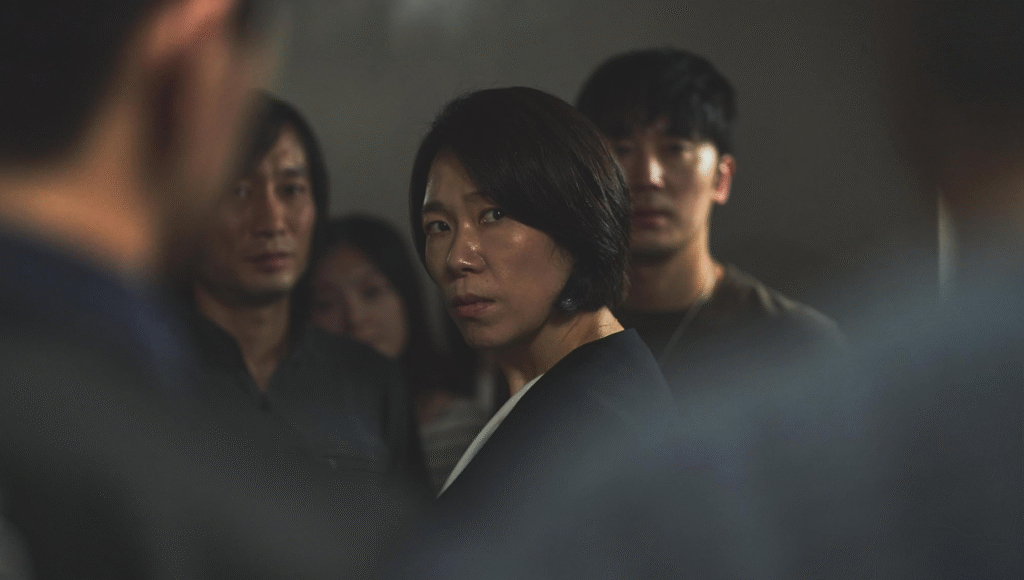
Just when things couldn’t get any worse, a surprising confession emerges.
A man from apartment 1301, likely a freelancer, comes forward and claims responsibility for the mysterious noises. He says he planted a speaker system in his unit that’s been unknowingly causing the disturbance across the floors. The police take him into custody, and the community collectively turns its blame toward him.
But for the man in 1401, this couldn’t have come at a worse time. It’s the final window of a crypto pump-and-dump scheme, his one chance to pull out and secure the profits he desperately needs to save his apartment and livelihood.
But under police investigation, without access to his accounts or freedom of movement, he misses the window. The crypto crashes. He loses everything—his apartment, his life savings, and the dream he sacrificed so much for.
Part 4: Uncovering the Rot Beneath the Walls
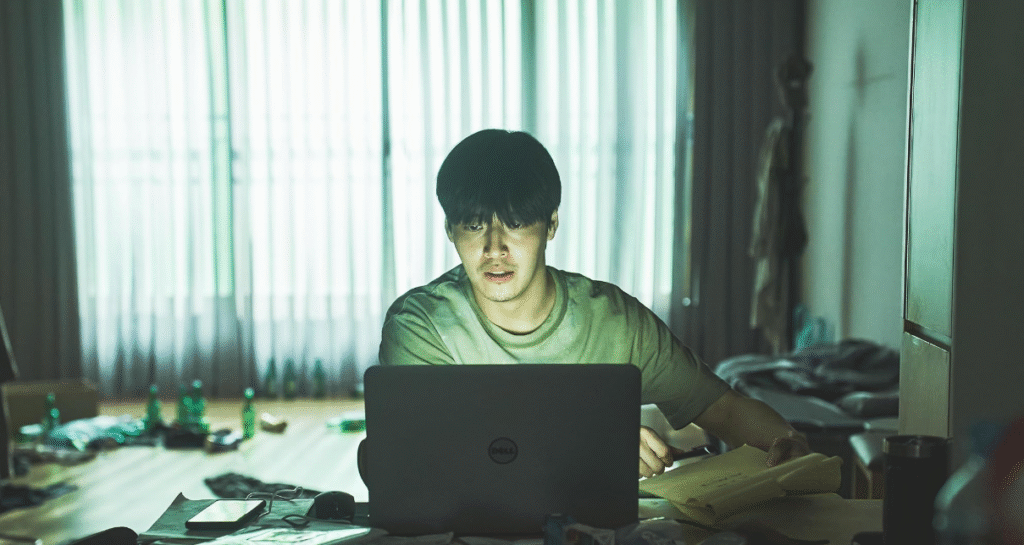
The culprit from 1301 shares a theory: this noise, this psychological torture, is not a coincidence. It’s possibly a deliberate result of construction shortcuts, shady real estate tactics, and a deeply flawed system in modern Korean housing. Together, they suspect the landlord—who has remained eerily indifferent throughout—knows more than he lets on.
Determined to uncover the truth, they investigate further and eventually discover that the landlord had accepted bribes from the construction company. The building was intentionally built in a way that prioritized luxury aesthetics over basic human comfort. Soundproofing was ignored. Mental health was disregarded. It was a business model disguised as urban development.
They also discovered that the landlord, now living in a quiet, luxurious penthouse, was never affected by the chaos she profited from. Faced with the betrayal, the lies, and the broken system, our protagonist snaps. He burns down his remaining possessions and walks away from it all. He returns to his mother, not as a man defeated, but as someone who finally takes back control by choosing peace over illusion.
Part 5: The Noise Never Ends – A Final Realization
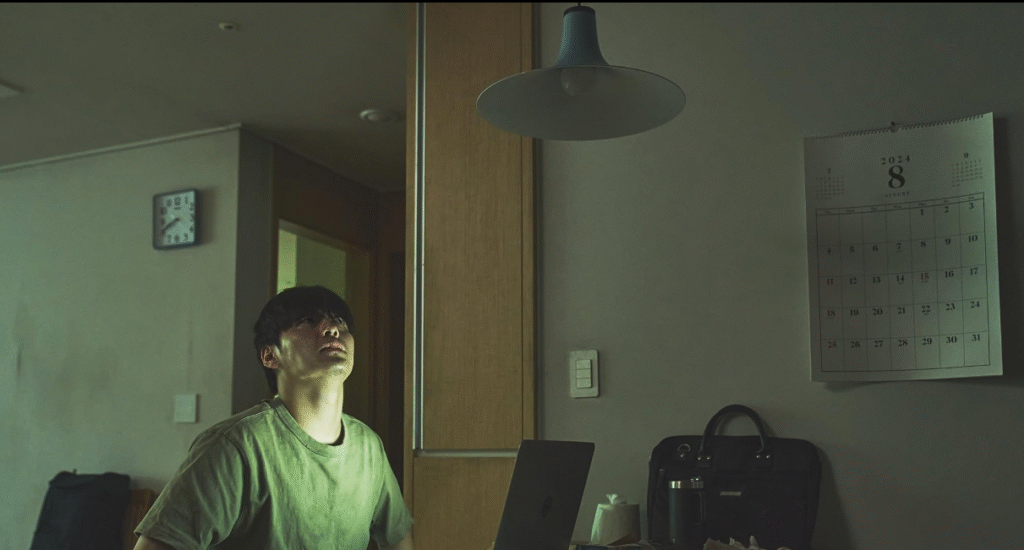
In the final scenes, the man returns defeated yet drawn to the building he once called home: Unit 1401. And what does he find?
The noise is still there. The same chaotic, maddening, soul-breaking noise. Nothing has changed. This ending raises a disturbing question: Was it ever about just one building, one landlord, or one flawed construction?
It begins to hint at something larger—something systemic.
There’s a growing suspicion that Korea’s urban development projects are being built in the name of modernity and foreign influence, mirroring German precision or Albanian progress. But beneath the façade of “global standards,” what people actually inherit is psychological distress, invisible violence, and constant unrest. The dream of peaceful Korean apartment living turns into a daily battle with unseen forces, represented by relentless noise.
And so the film ends with a chilling implication: maybe it’s time to stop dressing up the problem in foreign ideals. Maybe it’s time to stop pretending uniformity brings peace. Maybe the real noise isn’t coming from the walls, but from a broken model of progress echoing through generations.







Thanks!